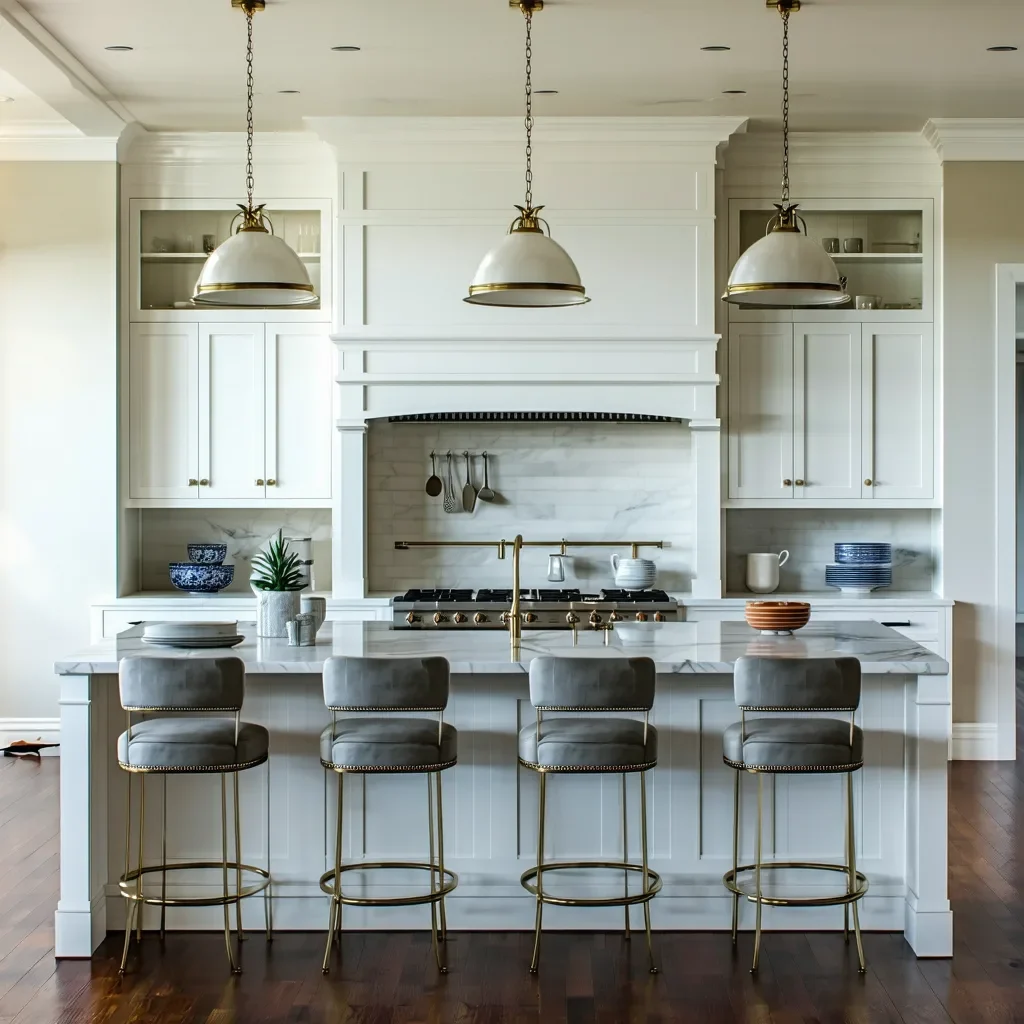
Is a Kitchen Island Right for Your Space and Lifestyle?
A kitchen island is one of the most requested features in modern remodels—and for good reason. It offers additional workspace, seating, storage, and even style. But is it the right fit for your specific kitchen layout and remodeling goals?
This guide explores the benefits and considerations of adding an island to your kitchen remodel, helping you make an informed, value-driven decision.
Benefits of Adding a Kitchen Island
Extra Counter Space
A kitchen island provides more prep area, perfect for cooking, baking, or serving meals. If your current kitchen lacks workspace, this addition can dramatically improve functionality.
Built-In Storage
Islands can house cabinets, drawers, open shelving, or even hidden appliances. They’re ideal for storing cookware, utensils, or pantry items.
Additional Seating
With overhangs or integrated seating, your island can double as a breakfast bar or casual dining area. It’s a great way to make the kitchen a social hub.
Multipurpose Functionality
Islands are highly versatile:
- Prep station with a sink or cutting area
- Cooking zone with built-in cooktop
- Beverage center or wine fridge spot
- Homework or workspace for families
Visual Focal Point
A well-designed island adds architectural interest and anchors the kitchen design. With the right materials, it can be a statement piece that elevates the whole room.
What to Consider Before Adding an Island
Available Space
An island requires adequate clearance on all sides—generally at least 36–42 inches around the island for comfortable movement.
Minimum kitchen width for an island:
- Ideally, 12–13 feet wide to allow traffic flow
- Smaller kitchens may benefit from a peninsula or mobile island
Workflow Disruption
Your island should enhance, not hinder, the kitchen’s work triangle (sink, stove, fridge). Poorly placed islands can block movement and cause congestion.
Cost Implications
Islands vary in price depending on size, materials, plumbing, and electrical work. Budget considerations may include:
- Custom cabinetry
- Countertop upgrades
- Lighting or appliance installations
Maintenance
More surfaces = more to clean. If your lifestyle is busy, opt for low-maintenance materials like quartz or butcher block that age well and clean easily.
Popular Kitchen Island Features to Consider
- Waterfall countertops for sleek, modern lines
- Pendant lighting to illuminate and style
- Open shelving for display and quick access
- Power outlets for appliances or charging stations
- Integrated appliances like microwaves, dishwashers, or beverage coolers
- Seating for 2–4 people with legroom and ergonomic height
Alternatives to Full-Size Islands
Don’t have room for a full island? Consider these space-saving solutions:
- Peninsula: Attached on one end, great for U-shaped kitchens
- Rolling carts or mobile islands: Flexible and budget-friendly
- Breakfast bar extensions: Built off existing counters or walls
Let Mazzamuto Construction Help You Decide
Adding a kitchen island can boost your home’s functionality, style, and resale value—but only if done right. At Mazzamuto Construction, we specialize in creating customized kitchen designs that suit your space and lifestyle. Let’s explore whether an island fits into your remodeling vision. Book a design consultation today.
Frequently Asked Questions (FAQ)
1. How much space do I need for a kitchen island?
Ideally, your kitchen should be at least 12 feet wide. You need at least 36–42 inches of clearance around all sides of the island.
2. Can I add an island to a small kitchen?
Possibly. A small mobile island or peninsula might be more appropriate, depending on your layout.
3. Is a kitchen island worth the investment?
Yes. Islands offer functional benefits and are appealing to homebuyers, making them a strong return-on-investment feature.
4. What should I include in my kitchen island?
Depending on your needs, you can add a sink, cooktop, storage, outlets, seating, or even appliances like microwaves or wine fridges.
5. Can I move an island if I change my mind later?
Freestanding or mobile islands are movable, but built-in islands with plumbing or electrical connections are permanent.
Key Takeaways
- A kitchen island can improve storage, function, and flow—if you have the space.
- Consider your layout, lifestyle, and remodeling budget before committing.
- Smaller kitchens may benefit from alternatives like peninsulas or rolling carts.
- Islands can become the kitchen’s heart with the right features and finishes.




